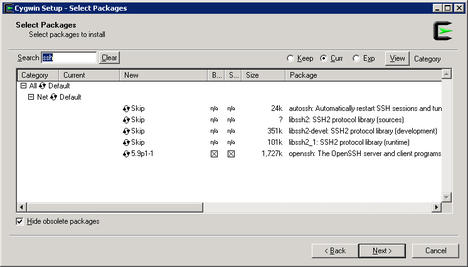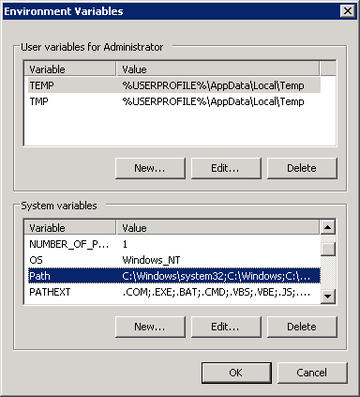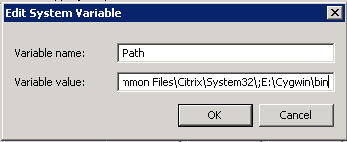« Previous 1 2 3 4 Next »
Win-Win with Cygwin
Customization
You might realize that you need to install another package or more sometime after this initial installation. If so, you need to run setup.exe again from where you saved it or directly from the website.
Step through the wizard, accepting the defaults. (The defaults should reflect your earlier selections.) When the wizard displays the list of Cygwin packages, select the category and the package you require. If you don’t know the category under which your package exists, you can search for it with the Search field (upper left corner of the Select Packages window) (Figure 6).
Once you’ve selected the package or packages you want, click on through the wizard normally until package installation completes. You can select more than a single package from a category or from multiple categories during a rerun of the setup wizard. If you want to uninstall a package, click the Keep link until it reads Uninstall and proceed through the wizard.
When selecting a package for installation, you might notice the two checkboxes. Selecting the left checkbox installs the binary package (executable and supporting libraries and dependencies) and selecting the right checkbox installs the package source code. You do not need the source code, but you might decide to install it for your own use.
Setting the Path
To add Cygwin to your PATH , open a CMD prompt on your Windows system, type PATH , and press Enter. Your response should look something like this:
C:\Users\Administrator>PATH PATH=C:\Windows\system32;C:\Windows;C:\Windows\System32\Wbem;C:\Windows\System32 \WindowsPowerShell\v1.0\;C:\Program Files (x86)\Common Files\Citrix\System32\
To use Cygwin effectively, you need to add E:\Cygwin\bin to your PATH environment variable. Of course, use the location of your installation’s bin folder. To do so, right-click Computer | Properties | Advanced System Settings | Environment Variables | System Variables , scroll down until you see Path (Figure 7), and click the Edit button. Enter a semicolon after the last entry and the full path to your Cygwin bin directory (Figure 8).
Now, when you open a CMD prompt or use the Cygwin Terminal, the Cygwin binaries will be in your PATH. Close and re-open any CMD windows to use the new environment variable.
« Previous 1 2 3 4 Next »
Subscribe to our ADMIN Newsletters
Subscribe to our Linux Newsletters
Find Linux and Open Source Jobs
Most Popular
Support Our Work
ADMIN content is made possible with support from readers like you. Please consider contributing when you've found an article to be beneficial.








